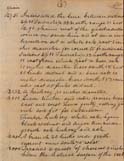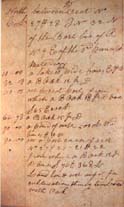

Early land survey records provide us with descriptions of vegetation in the state prior to European settlement.
Most of Illinois was surveyed between 1804 and 1856. Property boundaries needed to be established before settlers arrived to buy land. Surveying helped people make accurate maps.
Early surveyors in Illinois divided the land into a series of parcels in a consistent and standardized manner. They faithfully recorded the vegetation and general character of the land in their notebooks.
The surveyors started in the southern portion of the state, where the early population of Illinois settled first. They often wrote down the names of any large plants, or the plants that were abundant in a place. They recorded whether the land was flat, hilly, or wet.
They surveyed the land into townships, six miles square, which were bounded by lines running true north and south, and east and west.
Each township was divided into 36 sections, one square mile each, by lines running north, south, east, and west. The surveyors marked the corners and quarter sections halfway between them with buried posts. They also blazed "witness trees" with burn marks.
When no trees were present they built mounds nearby in order to help locate the posts in the future. Some of these trees and their bearings relative to the posts were recorded in the surveyor's notebook. These are referred to as "bearing trees".
How
today's scientists can use survey records
Ecologists
use these records to reconstruct plant communities that existed before
European settlement. For instance, they could
- count how many oak trees were used for bearing trees, or how many were mentioned in each section.
- make maps that show where the plants were located that were written about on the survey records (and compare it with today's maps).
- compare this map to the same pieces of land today to see if the same type of plants still occur there, or learn how the forest looked there before the settlers came.
|
|
Copyright © 2000 Illinois State Museum
